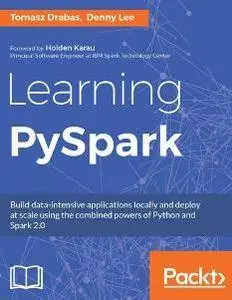Learning PySpark
by Tomasz Drabas and Denny Lee
English | 2017 | ISBN: 1786463709 | 273 Pages | True PDF | 7.5 MB
by Tomasz Drabas and Denny Lee
English | 2017 | ISBN: 1786463709 | 273 Pages | True PDF | 7.5 MB
Build data-intensive applications locally and deploy at scale using the combined powers of Python and Spark 2.0
If you are a Python developer who wants to learn about the Apache Spark 2.0 ecosystem, this book is for you. A firm understanding of Python is expected to get the best out of the book. Familiarity with Spark would be useful, but is not mandatory.
What You Will Learn:
- Learn about Apache Spark and the Spark 2.0 architecture
- Build and interact with Spark DataFrames using Spark SQL
- Learn how to solve graph and deep learning problems using GraphFrames and TensorFrames respectively
- Read, transform, and understand data and use it to train machine learning models
- Build machine learning models with MLlib and ML
- Learn how to submit your applications programmatically using spark-submit
- Deploy locally built applications to a cluster
Apache Spark is an open source framework for efficient cluster computing with a strong interface for data parallelism and fault tolerance. This book will show you how to leverage the power of Python and put it to use in the Spark ecosystem. You will start by getting a firm understanding of the Spark 2.0 architecture and how to set up a Python environment for Spark.
You will get familiar with the modules available in PySpark. You will learn how to abstract data with RDDs and DataFrames and understand the streaming capabilities of PySpark. Also, you will get a thorough overview of machine learning capabilities of PySpark using ML and MLlib, graph processing using GraphFrames, and polyglot persistence using Blaze. Finally, you will learn how to deploy your applications to the cloud using the spark-submit command.
By the end of this book, you will have established a firm understanding of the Spark Python API and how it can be used to build data-intensive applications.



